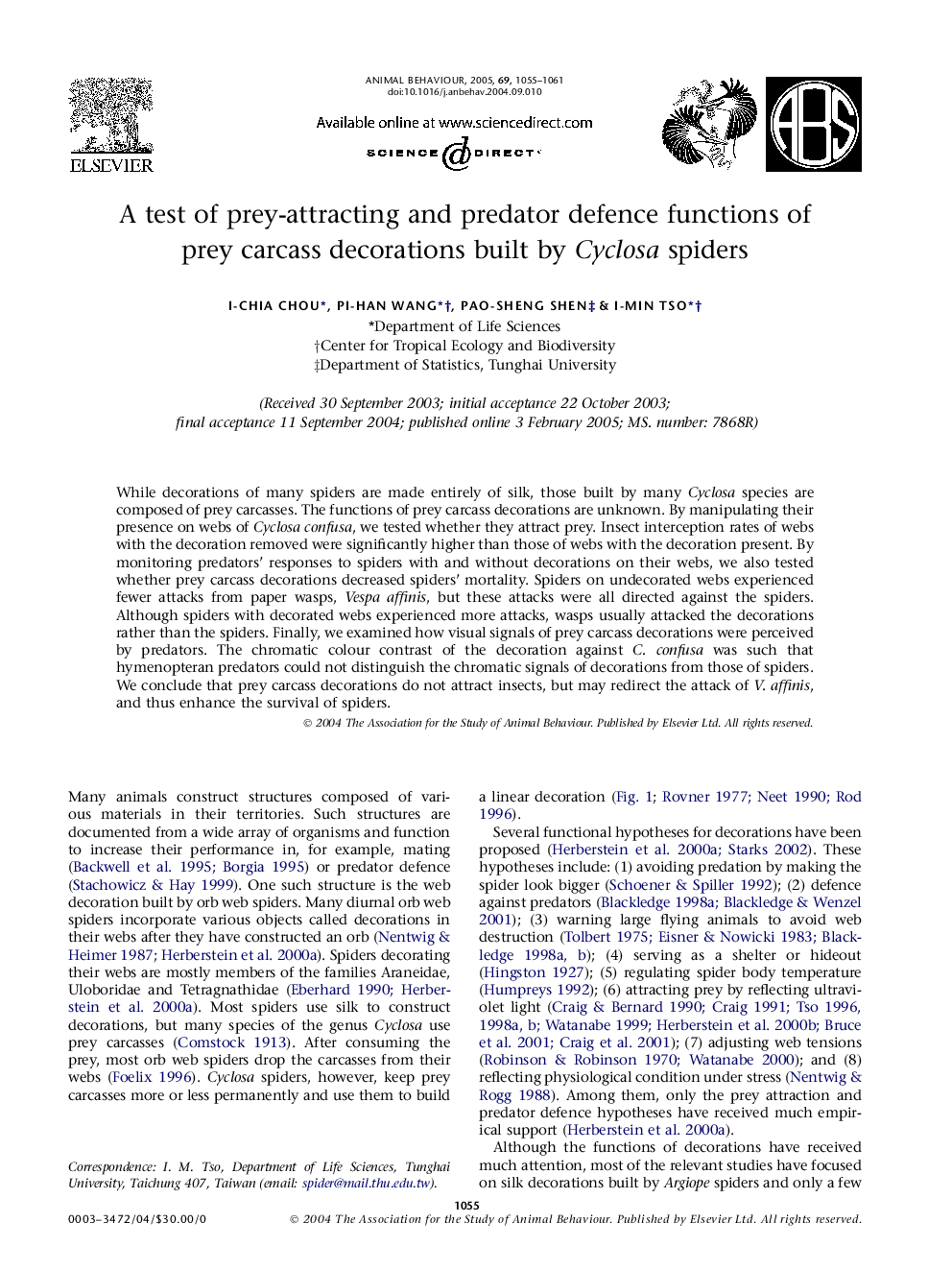| Article ID | Journal | Published Year | Pages | File Type |
|---|---|---|---|---|
| 8972126 | Animal Behaviour | 2005 | 7 Pages |
Abstract
While decorations of many spiders are made entirely of silk, those built by many Cyclosa species are composed of prey carcasses. The functions of prey carcass decorations are unknown. By manipulating their presence on webs of Cyclosa confusa, we tested whether they attract prey. Insect interception rates of webs with the decoration removed were significantly higher than those of webs with the decoration present. By monitoring predators' responses to spiders with and without decorations on their webs, we also tested whether prey carcass decorations decreased spiders' mortality. Spiders on undecorated webs experienced fewer attacks from paper wasps, Vespa affinis, but these attacks were all directed against the spiders. Although spiders with decorated webs experienced more attacks, wasps usually attacked the decorations rather than the spiders. Finally, we examined how visual signals of prey carcass decorations were perceived by predators. The chromatic colour contrast of the decoration against C. confusa was such that hymenopteran predators could not distinguish the chromatic signals of decorations from those of spiders. We conclude that prey carcass decorations do not attract insects, but may redirect the attack of V. affinis, and thus enhance the survival of spiders.
Related Topics
Life Sciences
Agricultural and Biological Sciences
Animal Science and Zoology
Authors
I-Chia Chou, Pi-Han Wang, Pao-Sheng Shen, I-Min Tso,
